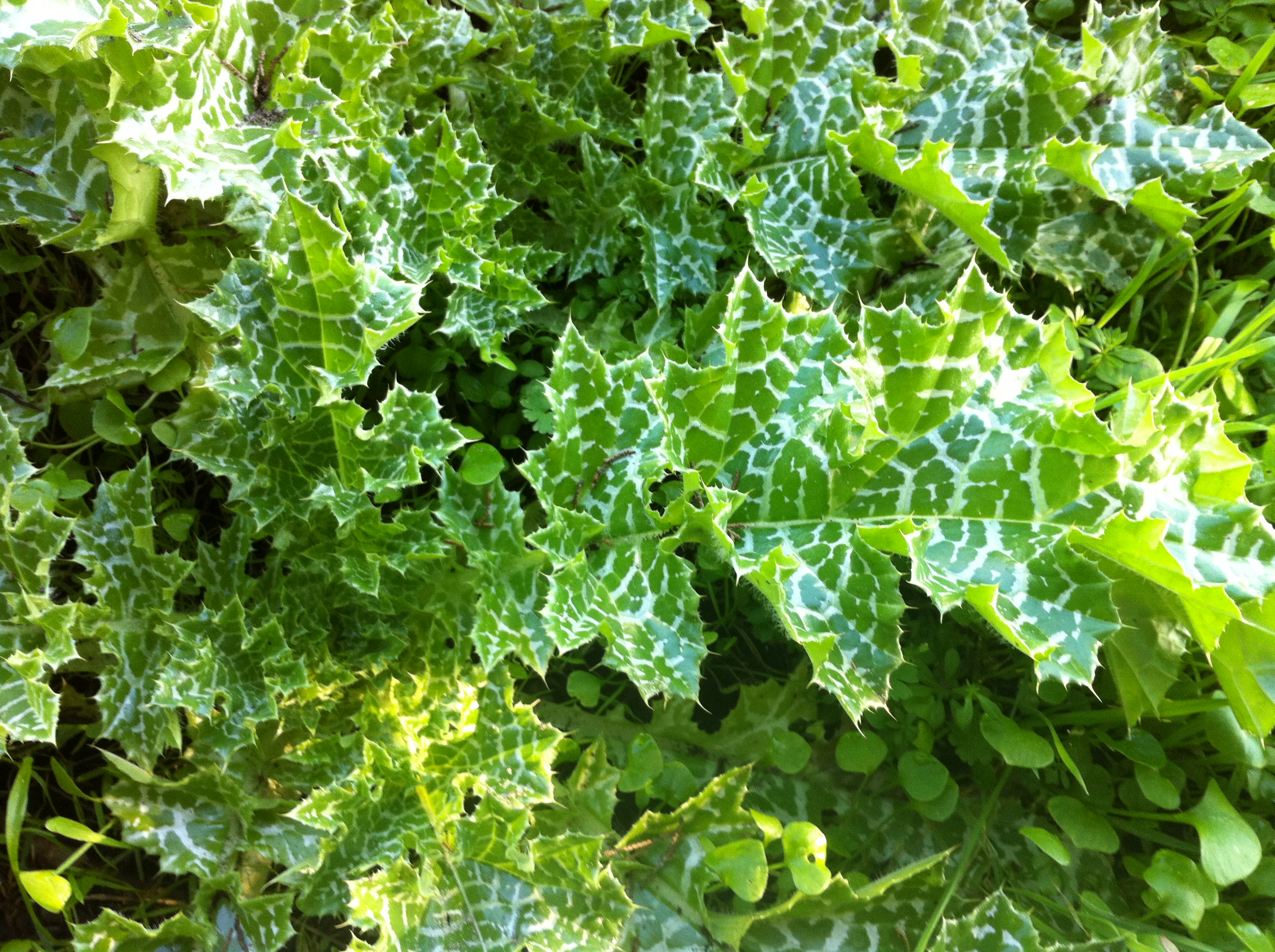Look what I found! A great big, beautiful Milk Thistle plant! It was tucked up on bank under the trees by the side of the harbour, just a minute from the beach. I didn't spot it at first as the dappled sunlight filtering through the branches onto its heavily patterned leaves was great camouflage.
Milk Thistle is one of those herbs which once seen, is always recognisable. It's a sturdy, fine looking thistle with distinctive white markings which look a lot like drizzles of milk. Hence the name - though the seeds are used to increase milk production (galactagogue is the pleasing technical term) so the association may be due to more than just looks. It's sometimes known as St Mary's Thistle, in reference to a myth that whilst feeding the baby Jesus, the Virgin Mary spilled her milk onto its leaves causing the markings. Herbs are quite often named for a particular saint (St John's Wort is another good example) perhaps as a way to help herbalists in the middle ages keep on the right side of the church authorities and avoid association with magic or witchcraft.
The botanists have endowed it with two latin names which are used pretty much interchangeably - causing much confusion for trainee dispensing assistants. I tend to write it as Carduus marianum in my prescriptions, though now I come to think of it, I have it shelved under S for Silybum marianum in my dispensary in London. Perhaps I use Carduus because I am still not grown up enough not to snigger at the name 'Silly-Bum'.
With its sterling reputation as 'the liver herb', it's a good plant to talk about in January, when so many people are trying to nurse their battered livers after the excesses of the holiday season. It's always found in hangover cures, although it's actually most effective taken before venturing out for an evening of carousing.
There are many herbs which have an action on the liver, and they are pretty much all bitter, a taste which stimulates the flow of digestive juices all the way through the system. But Milk Thistle is in a class of its own when it comes to treating all kinds of liver complaints - from the sludgey, fatigued feeling you get after too much celebrating, for supporting the liver during drug treatment, and even for much more serious conditions such as hepatitis and cirrhosis - though these latter should ONLY be treated herbally under the care of a qualified and experienced practitioner, of course.
Research suggests that the 'magic' ingredient is silymarin, which is found in the seeds and appears to have two key effects on the liver. It improves the ability of liver cell (hepatocyte) membranes to resist toxins, hence its ability to protect against some if the effects of alcohol. Silymarin has also been shown to increase liver cell production, which means toxins are processed more effectively as they come through. These qualities can be very helpful any time your liver needs to function more effectively. This would include menopause, when hormones are flying around and all need to be excreted by the liver and high cholesterol, since cholesterol is excreted by the liver and can increase in the blood when the liver function is less than optimal.
You can take silymarin as an extract, but as ever, I prefer the whole herb, believing that there are other chemicals in the plant which work in synergy to have the best effect. I often use a tincture in my practice, though I am mindful of using alcohol where there may be liver problems. Capsules work well and I have often given the dried seeds to be added to food. If you choose to use seeds, you do need a coffee grinder (or a pestle and mortar plus elbow grease) to break them up, as they are hard little things, which otherwise will simply pass whole through the digestive system. If you do decide to grind your own, do it in small quantities and store them in an airtight container in the fridge, as like other seeds they are high in oils which can go rancid fairly quickly.
I've been told that it grows so prolifically in the dry climate here in Santa Cruz that local herbalists collect their own seeds, so I'll be keeping an eye on this and any other plants I find as the year progresses and aim to do a little harvesting myself.

